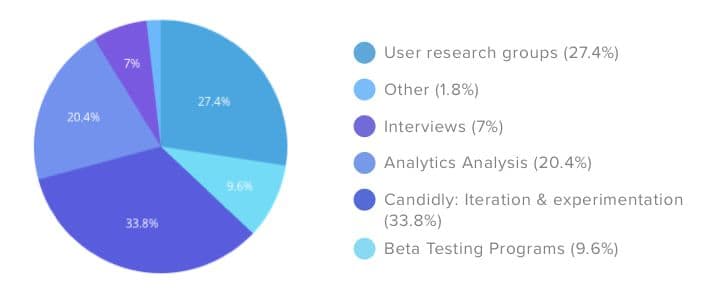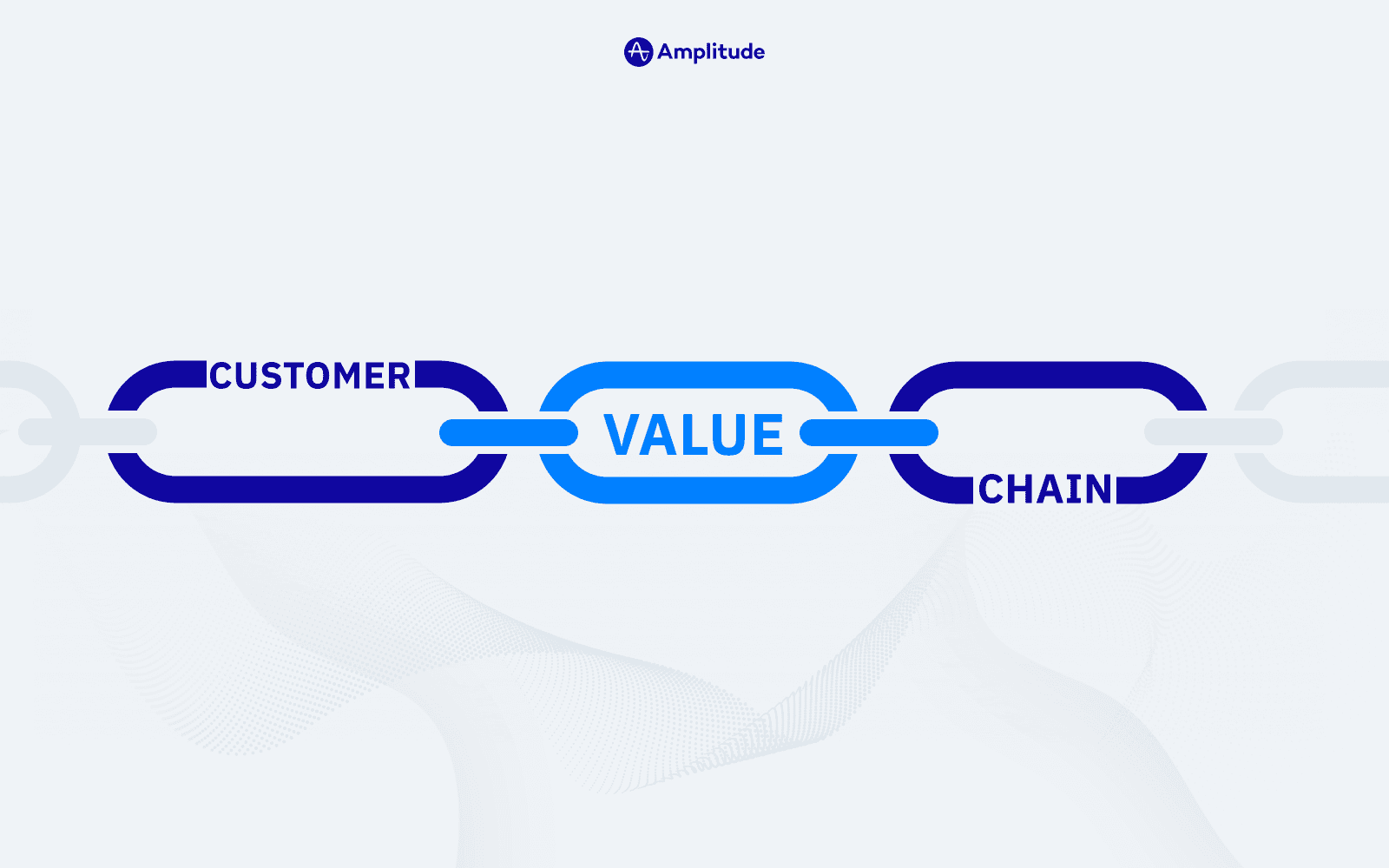How to Use Customer Value Chains in Your Product Development Strategy
Your product development strategy should be influenced by more than just business goals. Use the customer value chain to visualize how your products help—or hinder—people in their everyday lives.
Originally Published on November 17, 2020
Browse by category
You might claim to have a customer-first approach to your product development strategy—but is that actually the case? While many organizations say they uphold a customer-first philosophy, sales goals often prevail.
Your customer-first approach should be focused on building solutions around your users’ needs, not around what your competitors are doing or what’s likely to be the most profitable.
So how does this impact product development? A winning product development strategy is tightly connected to understanding the customer value chain. This allows product teams to build up intuition and identify gaps in the product.
Understand the Importance of the Customer Value Chain
The customer value chain encompasses customer needs, how they use your product, and how to make it easier for them to use your product. Essentially, the customer value chain gives you a holistic picture of how your product adds value to your customers’ lives. It helps people visualize customer needs and how your products map back to those needs, with everything linked—or chained—together.

When you have a better understanding of your customers and how they interact with your product, you’re empowered to make better decisions.
The customer value chain always starts with the customer. It’s not about your business goals, sales quotas, product ideas—it’s purely about your customers.
So, when you’re evaluating your own customer value chain, the best place to start is with your users. You might ask some of the following questions:
- What are our users’ pain points?
- What’s easy for them to do with our product?
- What’s hard for them to do with our product?
- What do they want?
Based on these insights and other product analytics, you can evaluate products, features, and ideas against the customer value chain with a more objective and data-driven approach.
Focus on Customer Interviews
Remember, the customer value chain starts with the customer. You won’t get to know your customers if you never engage with them. There’s no better way to get inside your customers’ heads than to ask them questions directly.
Most product managers collect customer feedback during every phase—before, during, and after the build. But only 7% use customer interviews.

While surveys and analytics are important, customer interviews go deeper and give you great qualitative feedback. They give interviewees a chance to get to know customers and how they use your product, which comes in handy now and down the line.
At Amplitude, we talk to people upfront in interviews to understand their requirements. Sometimes, we show mockups and designs to get feedback as well. This helps us become familiar with customers over time and build intuition that we can lean on when making day-to-day decisions.We also make sure to critically ask, “Does anyone actually want this?” before building it.
These interviews serve as a starting point for identifying the customer value chain and what their needs, wants, challenges, and aspirations are.
Factor Feedback into Your Product Development Strategy
It’s easy to collect feedback and do nothing about it. But customer-first product teams incorporate feedback into their product development strategy on a continual basis.
We use Productboard to collect, organize, and analyze customer feedback. Project managers dig through all the notes to get a gut check on how current customers feel and then prioritize input accordingly. They lean into the intuition they developed during customer interviews and from their experience on the team. This means they don’t need to conduct interviews and surveys every little step of the way and can instead rely on the knowledge they’ve gained through previous customer interactions.
Another strategic advantage our product team has is the ability to leverage our customer partners as beta testers to get early feedback. Just shy of 10% of organizations actually have a beta testing program, and we’ve found ours to be incredibly valuable. We use feature flags to get new launches on targeted users’ radar and successively collect feedback.
Our beta testing happens in a phased approach. We’ll do the customer partner release, then a fractional release to about 10% of our customers, and then a release to everybody in the larger beta group. After that, we take the beta label off. This allows us to easily iterate and implement customer feedback along the way, releasing an improved version each round.
Synthesize Information with One-Pagers
Ever hear of analysis paralysis? It’s a real challenge when you have so much rich quantitative and qualitative data—you don’t know where to start or which information to prioritize. This data overload can lead to inaction.
To avoid this analysis paralysis, we synthesize the information for the entire product team at Amplitude. We build one-pagers, documents that list requirements for the product, the customer problem, and insights from interviews to validate.
The product development team writes the one-pager to encapsulate the problem they’re trying to solve. These one-pagers come in handy throughout the product development process as they’re distributed to the entire team working on the project. Targeted interviews happen as a result, as the product team might reach out to and solicit feedback from customers who have used the user-related feature or the feature we’re improving. We might show mockups or even designs and evaluate customer feedback against the information from the one-pager.
Though the one-pager might hint at the solution, it’s not meant to be the solution. Instead, these one-pagers summarize the customer challenge, so the product team can generate ideas and build new solutions around that. They also ensure our ideas are always close to the customer value chain, keeping the team aligned and on track for the goal at hand.
Be Nimble in Your Product Development Strategy
Though you might have a strong product development process that’s tightly integrated with the customer value chain, it’s still important to maintain a level of flexibility. Strong plans loosely held is our mantra. Our team understands that everything can change at any point along the way, so we’re able and willing to pivot faster as we’re not afraid to go back and restart at any time.
Want more Amplitude on Amplitude content? Check out this recap from our Amplify sessions.

Dana Levine
Former Product Manager, Amplitude
Dana is a former Product Manager at Amplitude. He enjoys building products that make peoples’ lives easier, and using data to answer interesting questions. He has started two companies, worked at a wide variety of startups and larger corporations, and studied Neuroscience and Bioengineering at MIT.
More from Dana




